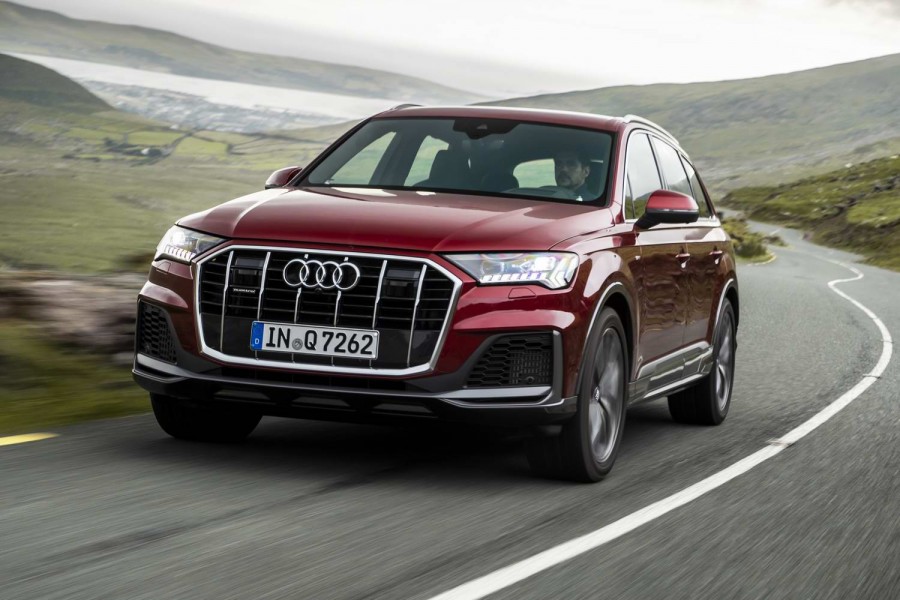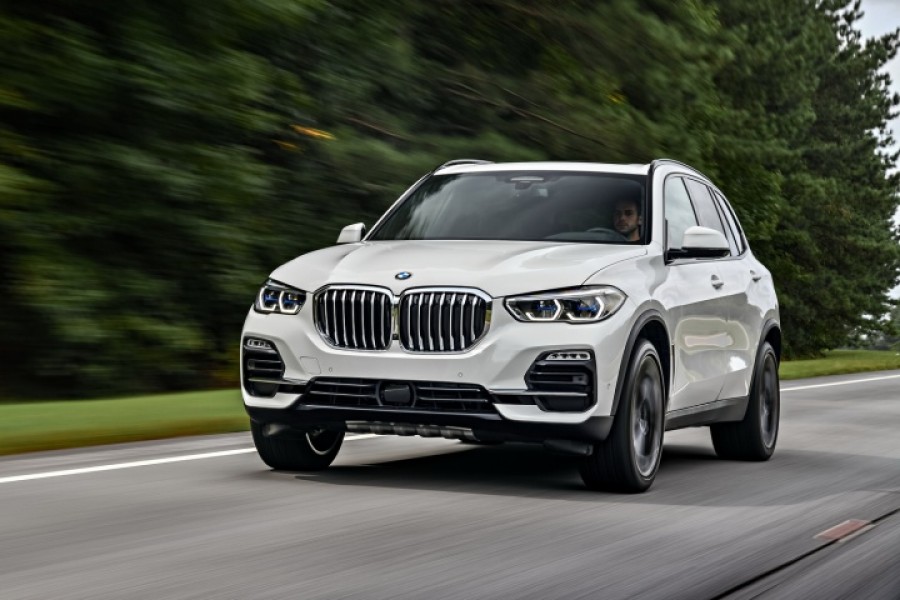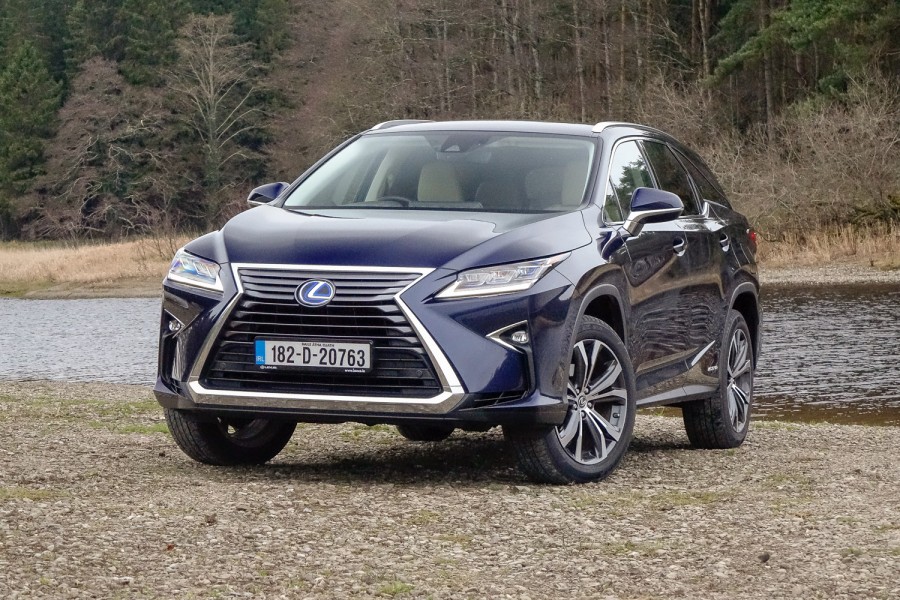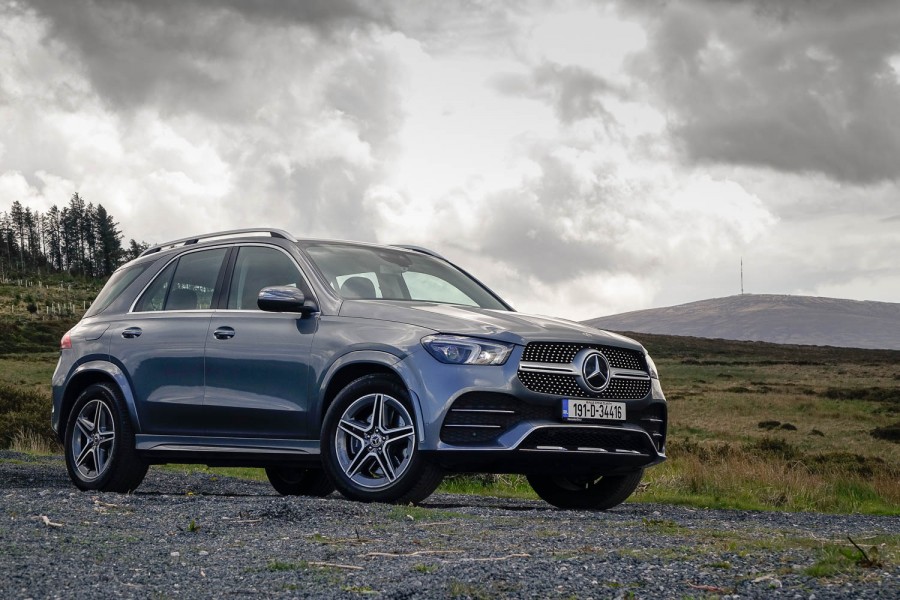The updates that make up the 2020 model year Audi Q7 are subtle, but they bring the big seven-seat SUV up to date with the rest of the Audi range in terms of interior, safety technology and exterior SUV style. We took the '50 TDI' variant around the Ring of Kerry to test drive it.
In the metal
The Audi Q7 really has to be in S line specification (as in the pictures here), or else it looks under-wheeled and well, weedy. This new red colour gives the big SUV a more modern appearance as well, all the better to emphasise the new bits and pieces. Up front, there's a restyled radiator grille with more presence, a new bumper and new-look lights depending on options. The side sills have been re-sculpted as well, while the rear lights are new and joined by a chrome strip to visually align the Q7 with, for example, the Audi A8.
Inside, the updated Q7 gets the same double touchscreen layout we've already seen on that A8 and the Audi A6. It looks smart, the graphics are sharp and there's a wealth of connectivity technology underpinning it. No doubt buyers will be wowed by its appearance and tactile operation in the showroom, but I don't like the system. It seems slow to react at times and the lower screen, mostly devoted to the climate control, takes up a huge amount of space. I'd rather physical buttons and/or a more compact set-up. Nonetheless, the rest of the cabin is huge, one of the most spacious in the segment, and, as you'd hope from Audi, beautifully made.
Driving it
All versions of the updated Audi Q7 get a smooth eight-speed automatic gearbox and quattro all-wheel drive. The TDI diesel engines now get a 48-volt mild hybrid system as well, which should help reduce fuel consumption, but can't really be felt in normal driving - other than the initialisation of engine stop-start at a higher speed than before (22km/h now). That 48-volt system does allow for the addition of an active anti-roll feature for the first time (previously only available on the Audi SQ7), though that will be an expensive option, even if it does work well at keeping the body lean to a minimum without upsetting the ride comfort. Air suspension is standard, and the S line cars get a sportier derivative that brings with it a slightly lower ride height.
Cycling through the various drive modes, there's a distinct difference between the comfort and body control levels on each. And it's quite entertaining to see and feel the whole height of the car change when you shift from, say, the Dynamic setting to the dedicated Offroad mode. Buyers can also add in rear-wheel steering, which is worth paying for, as, not only does the Q7 drive better with this, it makes the car considerably easier to manoeuvre when parking etc. Nonetheless, the Q7's steering remains lifeless and it's competent on the road rather than even slightly engaging.
The TDI diesel engine is a high point, mixing the culture of a V6 with plenty of low-down torque and a decent 286hp power output, too. It makes light work of the Q7's considerable bulk without ever turning coarse or loud.
What you get for your money
Audi Ireland has yet to confirm pricing of the new Q7, but it's expected to start in the region of €85,000. We'd assume it will stick with SE and S line trim levels, while the 3.0 TDI V6 engine will be sold in '45' (231hp) and '50' formats, alongside at least one TFSI petrol option and even a plug-in hybrid variant in time. Once specifications have been confirmed in September, we will update this review.
Summary
Audi has done just enough to keep its Q7 fresh against the competition, and indeed Audi's own model range, but this is not a drastic update of the big SUV. To drive, it doesn't do anything better than its rivals, but it looks smart in S line spec outside and in and is undoubtedly a high-quality offering. That seven-seat cabin is spacious, too, making the Q7, as ever, a premium family option for those that prioritise technology and image.























